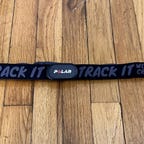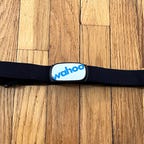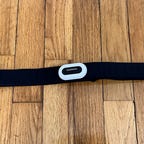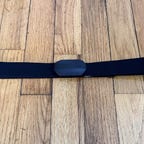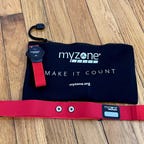Best Chest Strap Heart-Rate Monitors for 2024
If you need an accurate, comfortable way to track your cardio health, check out our picks for the best options.
What to consider
Purpose
Metrics
Battery life
Connection options
Our Picks
Whether you're an athlete training for a race or want to monitor your heart for health reasons, the best chest-strap heart rate monitors help you accomplish your needs. While wearables like smartwatches and smart rings can measure your heart rate easily on the go, chest strap heart-rate monitors usually offer the most accurate readings. Many of these can easily pair with your smartwatch, fitness tracker or smartphone.
Chest strap heart-rate monitors have a reputation for being uncomfortable to wear during exercise, but I put several monitors to the test during my workouts to find a few that passed the wear test. Below, you'll find my picks for the best chest strap heart-rate monitors. We update this list periodically as new models become available.
What is the best chest strap heart-rate monitor overall?
The best chest strap heart-rate monitor will depend on your specific needs, like what type of activities you plan to wear it for. Our pick for the most comfortable is the Wahoo Tickr X, while we recommend the MyZone MC Switch for beginners.
Best chest strap heart-rate monitors of 2024
The Polar H10 is ideal for outdoor activities. You'll need to download the Polar Beat app to get the most out of it. The app is available for both iOS and Android, and uses Bluetooth and ANT Plus connectivity to pair with different devices. The Polar H10 can connect to two Bluetooth devices at once, so you can connect it to both your smartwatch and a compatible piece of fitness equipment, like some treadmills or exercise bikes. The heart-rate monitor is easy to clip on and adjust and comes in a variety of sizes to fit most users.
Once you're in the app, it's easy to go into settings and connect to the heart-rate monitor as long as your phone's Bluetooth is on. In the app you'll see you can select from 19 different activities to measure your heart rate, including some that don't use GPS, like strength training and treadmill running, tennis, badminton, indoor cycling or other indoor activities. This heart-rate monitor can also be used for swimming, as it's waterproof.
I tested this heart-rate monitor during my Future app strength training sessions and during a couple of walks. Since Future automatically connects to my Apple Watch too, I was able to compare my Apple readings against Polar's. I found that I didn't get much information recorded during strength training on the Polar app with the exception of how long the workout was. But when I dove into the Apple Fitness app I was able to see that the Polar H10 captured my average heart rate and it matched with the data my Apple Watch collected. However, for my walks both indoors and outdoors, the Polar H10 was able to show me a detailed reading of the distance I walked, my average heart rate, calories burned, max heart rate, pace and fat burn percentage of calories. A line graph chart is also included that shows you a display of your heart rate and time during the activity.
If you plan on using it mainly outdoors for activities like running, jogging, hiking, skating, skiing or rowing, you can't go wrong with this heart-rate monitor. In fact, if you already own a Polar watch, you may get even more out of it when paired with this heart-rate monitor.
Most comfortable chest strap heart-rate monitor
Wahoo Tickr X
The Wahoo Tickr X is one of my favorite heart-rate monitors because it's comfortable enough that you forget you're wearing it. The heart-rate monitor is easy to strap on and adjust. It's also waterproof, so it'll function even at your sweatiest. You'll need to download the Wahoo app (available for iOS and Android) to connect the heart-rate monitor, but it's also compatible with more than 50 third-party fitness apps and Garmin watches.
I tested this heart-rate monitor out during a Future strength training session and a couple of walks on the treadmill. I found the Wahoo Tickr X to be most appropriate for distance activities like walking, running or cycling. It can track running, treadmill, cycling, Kickr and exercise bike use. Although it doesn't have an option for other forms of activity, it did detect my strength training workout. I compared it to what my Apple Watch recorded during the workout as well and found that the average heart rate was the same as the Wahoo Tickr X recording. Other than that, it didn't offer much insightful information, which is good to know if you're looking for additional details on your exercise.
I'd recommend using this heart-rate monitor if you're training for a race, since the data recorded during my walks gave a detailed look at pace, elevation gain, laps, time and miles. The Wahoo Tickr X is also a solid choice if you want a heart-rate monitor that stays put and feels comfortable no matter the distance of your training activity.
Chest strap heart-rate monitor with best battery life
Garmin HRM-Pro
If you're a loyal Garmin user or want a heart-rate monitor with a long-lasting battery, you'll like the Garmin HRM-Pro. Impressively, this heart-rate monitor can last about a year, as long as you only use it an hour per day. It's also waterproof so it's appropriate for swimming. The Garmin HRM-Pro is easy to connect your device via the app, and it's also compatible with third-party fitness apps like Zwift or Strava, as long as they're paired with Bluetooth.
Garmin is known to be running and cyclist friendly, but for the price I would've hoped that it would be versatile for other types of exercise too. I was able to test out the Garmin first during a strength training session via the Future app, which already syncs up with my Apple Watch. I'm not sure if this was a user error, but what stood out to me is that the data it provided seemed exaggerated. During a workout that was 45 minutes long, it told me that I'd burned over 4,000 calories, while my Apple watch told me I'd burned a total of 241 calories. Discrepancies like this go to show you that you shouldn't always rely on the data provided by your wearables.
Even though I didn't use it for a run, I did use it for a more low-impact activity: walking. In this scenario the device seemed to provide better information. The app shows you laps, time, distance and average speed. This leads me to conclude that the Garmin HRM-Pro would most benefit athletes who train for distance. I also think it would pair better if I'd been using a Garmin smartwatch, which I don't own, so that's something to consider if you're interested in the Garmin HRM-Pro.
Best budget chest strap heart-rate monitor
CooSpo H808S
If you aren't looking to spend a lot of money on a heart-rate monitor, consider the CooSpo H808S. The CooSpo H808S chest strap has its own app (CoospoRide), and it can also connect to various third-party fitness apps like Polar, Wahoo, Endomondo, UA Run, Garmin, Peloton and more.
Besides the MyZone MZ-Switch, this is the only other heart-rate monitor I tested that flashes an LED light to signal that it's connected. To activate it, you have to wet the sensors on the strap before securing it on. Speaking of which, it's waterproof, which is ideal if you tend to sweat a lot or want to use it for swimming.
I connected it to my Wahoo account during a couple of walks and it functioned well for that purpose. Based on the other compatible apps, you may enjoy this heart-rate monitor if you're training for a long-distance race or taking a cycling class. When I used it for strength training I don't believe I got as much out of it as I would have liked compared to if I was training for a race.
However, what's great about the CooSpo H808S is that you have the ability to connect it to various apps and Bluetooth devices so you can get your readings across multiple platforms. The CooSpo H808s proves that you don't need to break the bank to get a good chest strap heart-rate monitor.
Best chest strap heart-rate monitor for beginners
MyZone MZ Switch
The MyZone MZ Switch is one of the easiest chest strap heart-rate monitors to use if you're a beginner. The kit comes with a wrist and chest strap so you get even more accurate results. It also includes a carrying case so you can keep everything neatly together.
The strap on the wrist wearable consists of a round ECG and PPG sensor, which resembles a watch minus the numbers. The sensor has a button that controls the on and off switch, which lights up. The wrist strap has velcro so you can fasten it to your liking, while the chest strap is easy to secure with some buttons.
In addition to MyZone's app, you can connect to your Apple Watch, Samsung or Garmin devices or to third-party apps like Strava, My Fitness Pal and MapMyRun. I was able to use the MZ Switch during strength training workouts through the Future app and had no issues collecting my data after the fact. MyZone uses MyZone Effort Points to tell you a percentage of your maximum heart rate in different zones, which are broken up into colors -- from blue to yellow, light gray, dark gray, green and red. I found that this aspect made it easy to follow because MyZone also includes a rubric explaining what each zone means and why knowing your max heart rate is important. Compared to the data gathered from my Apple Watch, the MyZone MZ Switch's average heart rate, active and total calories were off by some figures, but I expected this since MyZone uses its own rating system.
Regardless, I think MyZone MZ Switch is the ideal heart-rate monitor if you want to be able to easily follow how hard your heart is working during interval training, strength training or just about any activity.
How we tested chest strap heart-rate monitors
Function during exercise: I tested each one of these heart-rate monitors during strength training and walking workouts to see how well they work for various activities.
Comfort: I rated them based on how comfortable the chest strap felt during my workouts.
Features: I considered the function of various features, like connectivity to other devices or apps, and whether other metrics are captured in addition to heart rate. I also looked at the battery life.
Compared it to a trusted heart-rate monitor: I compared it to my Apple Watch, which captures my heart rate throughout my workouts. While this might not be the best method of testing for accuracy, it's what I had available to me, and the Apple Watch data is easy to read and consistent.
Factors to consider when choosing a chest strap heart-rate monitor
Before you buy a chest strap heart-rate monitor, you'll want to determine what type of activity you will be doing while wearing it. Most are suitable for a range of cardio activities, from running to cycling, but not all would work for swimming, for example.
Also, decide how much you're willing to spend on a chest strap heart-rate monitor. You can find reliable ones for under $50, but if you want all the bells and whistles you can expect to spend over $150.
Figure out how important battery life is to you and how often you want to charge or replace it. Some chest strap heart-rate monitor batteries can last over a year, while others can last around 500 hours. This will vary per device and how often you use it.
Lastly, decide if you will be connecting the heart-rate monitor mainly to your smartphone or if you plan on connecting it to other devices. This will influence whether you want it to have ANT Plus or Bluetooth connectivity. Most now come with both, but it's still important to check.
How to choose a chest strap heart-rate monitor
When it comes to choosing the best heart-rate monitor chest strap for your workout, many of the factors in your buying decision will be based on personal preferences and your workout regimen. Here are a few things to look at while shopping.
Strap width: Before you buy, consider whether you'd be more comfortable with a heart-rate tracker that uses a slim strap or a wider one.
Module size: Some chest straps use tiny modules (the plastic puck-like part) that don't extend over the edges of the strap. Others, however, use larger monitors to measure your heart rate. Which style you choose to track your workout depends on your comfort preference.
Internal storage: If you don't like to hold your smartphone during your workout, opt for a heart-rate training monitor that can store your data in its own built-in storage. You can later transfer your heart-rate reading to your phone via your monitor's companion app.
Metrics: Consider what you want to monitor during your workout. Higher-end models capture real-time data covering everything from run cadence to stride length, as well as things like blood pressure, calorie burn and heart-rate variability to help you reach your fitness goals, while more basic models might track only your heart rate.
Battery: A wearable chest strap monitor can have all kinds of power sources. Some have a rechargeable battery. Others may have super-long battery life, but the battery isn't user replaceable or rechargeable. A longer battery life is always convenient -- no one wants a monitor to peter out during a run -- but there are lots of options. Make sure to check the description for battery life before buying a monitor.
Chest strap vs. wrist-worn heart-rate monitors: Chest strap and wrist-worn heart-rate monitors are both used to measure heart rate, but they use different methods to provide readings.
Electrical heart-rate sensors, found most commonly in chest strap heart-rate monitors, can detect electrical currents produced by your heart, somewhat similarly to what is done at the doctor's office with an ECG. These are considered the most accurate heart-rate readings because the electrical sensor can handle measuring your heart rate even during vigorous activity.
Optical heart-rate sensors use an LED light to track your pulse rate in the arteries as blood pumps through them. Optical heart-rate sensors are found in smartwatches and are useful to read your heart rate while at rest or walking, but are less reliable for high-intensity activity because the readings can be distorted.
ANT Plus vs. Bluetooth: Most wrist-worn heart-rate monitors like the Apple Watch use Bluetooth, which only lets you connect to one device. For example, if you're recording an outdoor run, you can only connect your Apple Watch to your iPhone.
ANT Plus technology, however, lets you wirelessly connect to multiple devices at once. This is a good option for athletes who are trying to track data from multiple sources. You can find this form of technology on devices like chest strap heart-rate monitors, indoor or outdoor bike computers and some smartwatches.
However, if you're planning on using a device that uses only ANT Plus technology and want to connect it to your smartphone, know that some Androids have ANT Plus technology capabilities, while iPhones do not. To find out if your device is capable of connecting to your Android, you have to find the ANT Plus Plugins app in the Google Play store and browse its compatible device directory. If you have an iPhone or an Android that does not have the capability to connect to your ANT Plus device, you will need an adapter to add to your phone.
Most people prefer the Bluetooth option because it connects faster and it's easily found on most devices. The good news is there are many heart-rate monitors that include both ANT Plus and Bluetooth to make the user experience easier.




